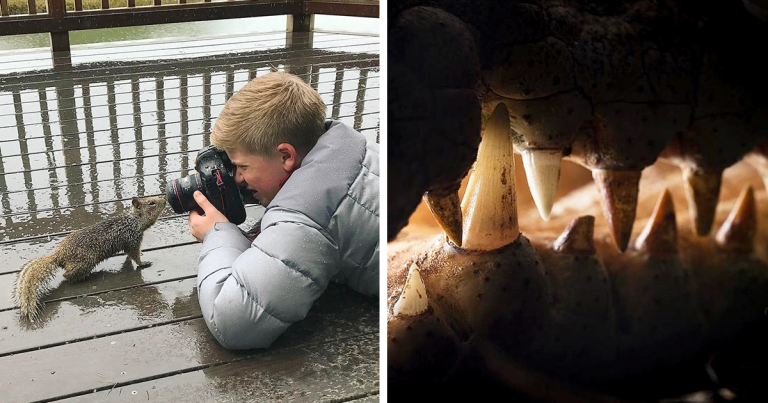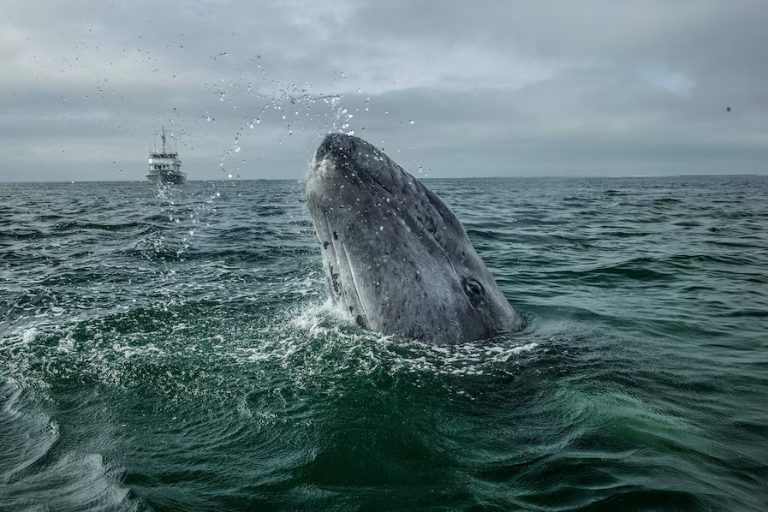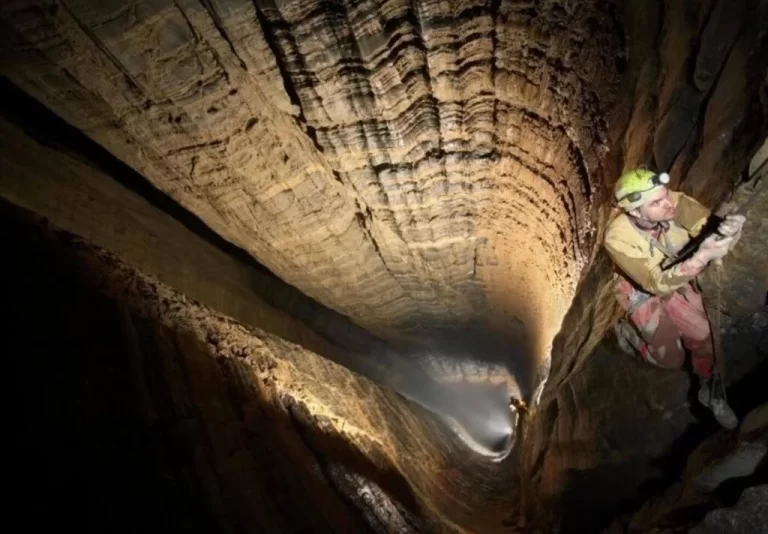Masterpiece Story: The Arnolfini Portrait by Jan van Eyck
The Arnolfini Portrait is both iconic and mysterious. Painted by Jan van Eyck in 1434, it continues to spark curiosity and speculation. Even after more than 500 years, many questions remain unanswered. While we may not know the full story behind the painting—something common in art history—we can still explore its fascinating details.
The Artist
Jan van Eyck, born sometime before 1395 and buried in Bruges after his death in 1441, was a prominent painter in the Burgundian Netherlands and one of the most important artists of the 15th century. His work, mainly portraits and religious scenes, marks a shift from medieval to Renaissance art. However, little is known about his early life and artistic development.
Van Eyck’s technique was groundbreaking. Although he didn’t invent oil painting, as was once believed, he mastered it. Unlike tempera (egg-based paint), oil paint dries more slowly, allowing for the buildup of translucent layers. This technique enabled him to create highly detailed and glossy images, and the realism in Van Eyck’s work comes from his remarkable attention to detail.

The Arnolfini Portrait
A man and woman stand in a private room, their hands gently touching in the space between them. Both are dressed in fine clothing, and their surroundings reflect their wealth and high social status. Although the painting is small (82 x 60 cm), it’s packed with detail. In this double portrait, the artist’s precision is seen not just in technique but in every element of the composition. Everything, from the room’s architecture to the colors chosen, is thoughtfully arranged.
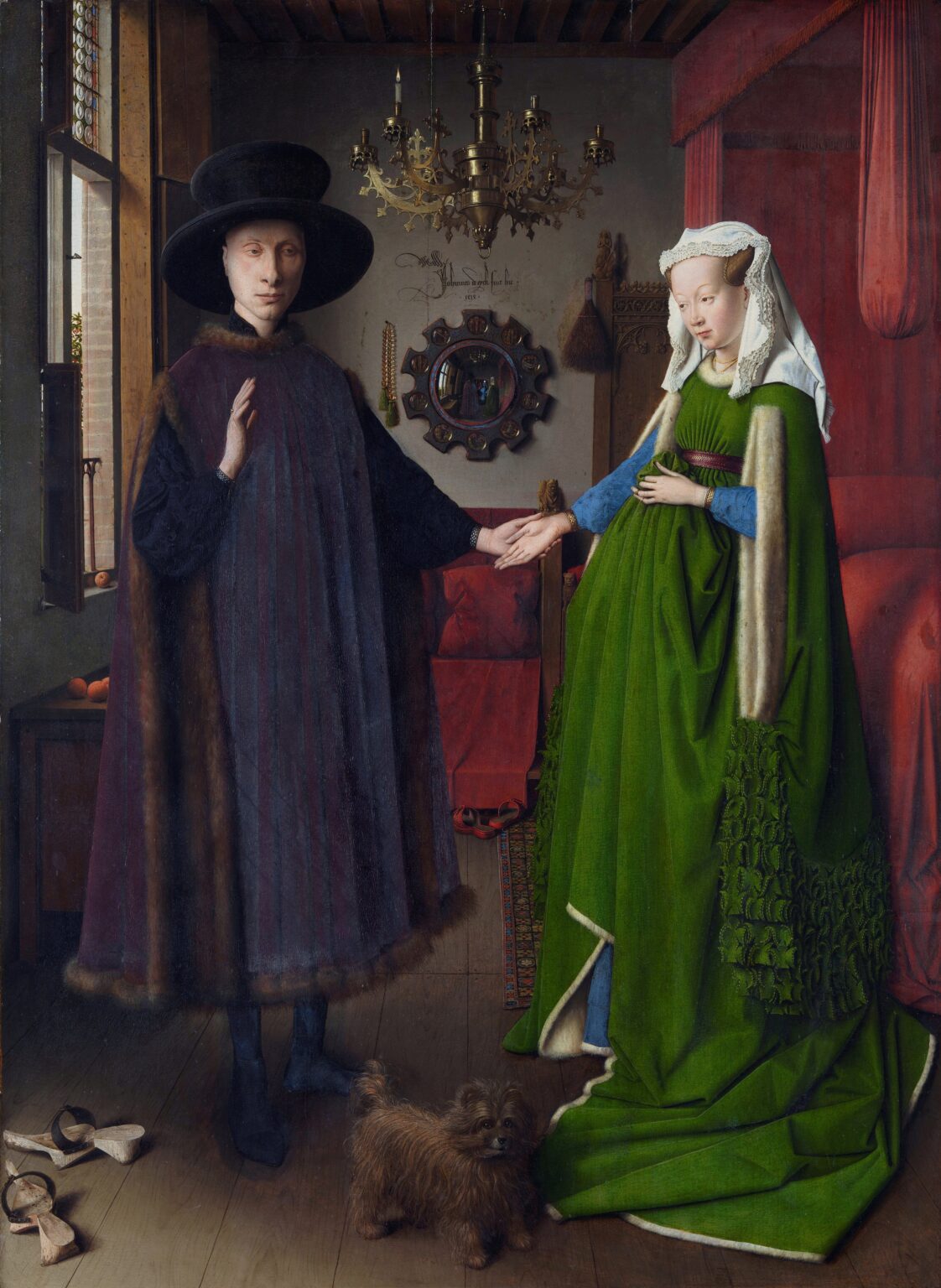
For a long time, this painting was thought to depict a marriage ceremony or a couple about to be wed. Today, it’s understood that the figures are already husband and wife, though their exact identities remain a mystery.
The man is most likely Giovanni di Nicolao di Arnolfini, also known as Giannino. The Arnolfinis were a large family of Italian merchants, with many living in Bruges at the time. In 1434, Giovanni would have been in his late thirties, and the face in the Arnolfini Portrait closely resembles another portrait by Jan van Eyck from around the same period.
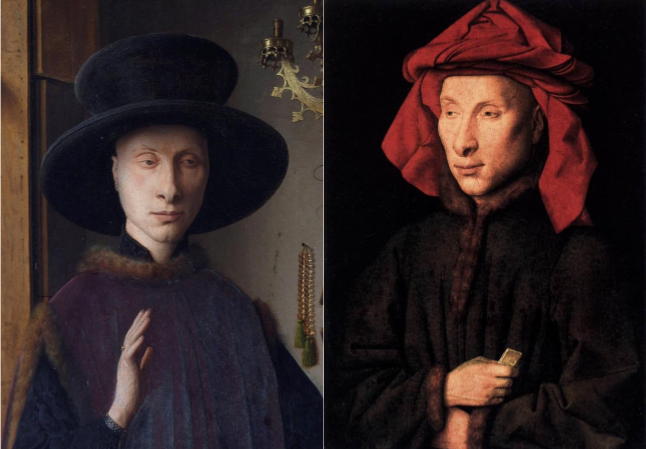
The identity of the woman remains more mysterious. For a while, people believed her name was Giovanna Cenami, who was Arnolfini’s second wife. However, a recent document showed that they didn’t marry until 1447, which was 13 years after this portrait was created and six years after Van Eyck’s death. Giovanni Arnolfini had married his first wife, Costanza Trenta, in 1426, but she passed away a year before the portrait was painted.
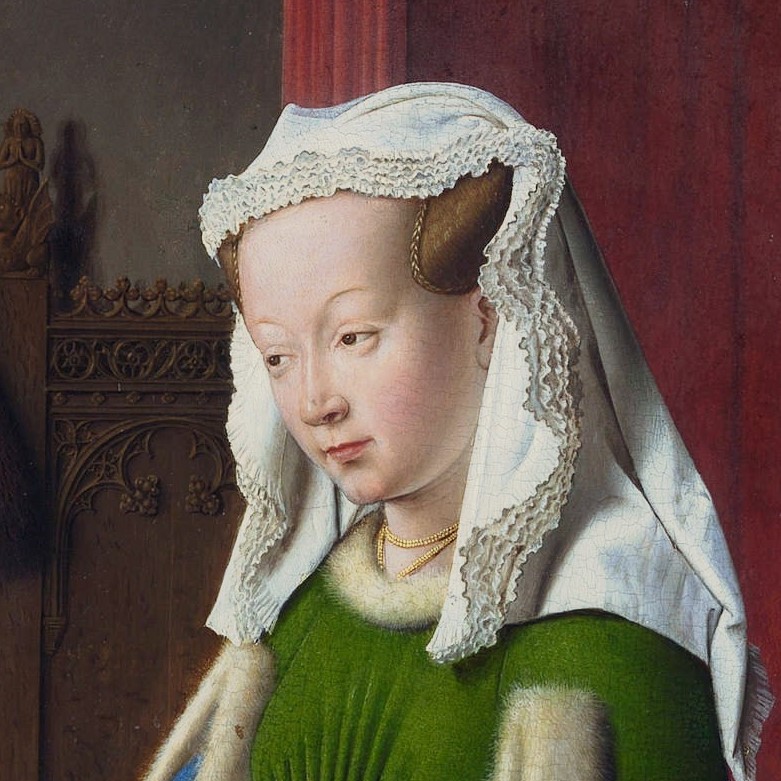
It wasn’t unusual to commission portraits of deceased people, so could that be the case here? While this isn’t the main interpretation, some art historians suggest that the dog at the woman’s feet supports this idea. In tomb effigies, dogs were often placed by women’s feet because they were believed to accompany and guide the deceased in the afterlife. Therefore, the dog’s presence in the painting might acknowledge her death, or it could just represent loyalty and fidelity.

Wealth And Status
What else does the portrait show beyond the couple’s identity? In the context of a growing merchant middle class, people who could afford it began commissioning portraits to boost their social status. This is exactly what we see reflected in Jan van Eyck’s detailed work.
You may also like: Top 7 Vincent van Gogh Paintings And What Makes Them Masterpieces
A Refined Home
The room where the couple stands is a modern mansion belonging to a wealthy merchant—comfortable and refined. It isn’t a palace, and they aren’t trying to appear aristocratic; instead, they showcase a more understated luxury. The house features brick walls, plastered surfaces, and a wooden floor. An intricate Oriental rug is placed on the floor, but there are no tapestries hanging on the walls. The room is well-furnished, with beautifully carved furniture.
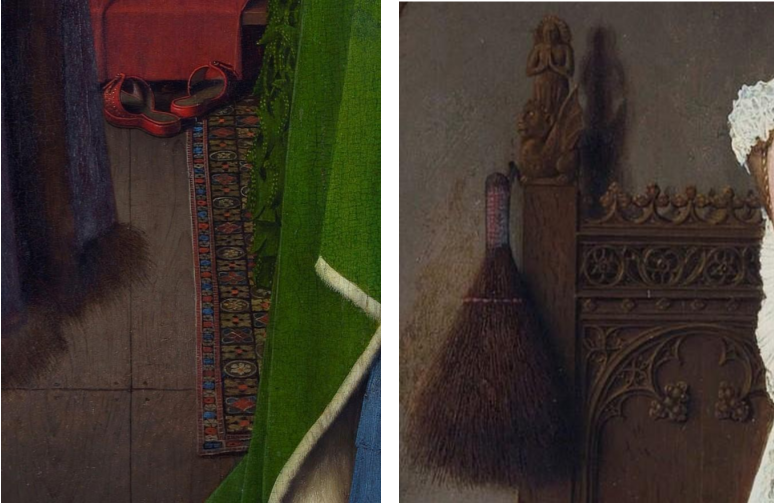
On the right, a bed is draped in a luxurious red cloth, with red cushions on the bedside chair and bench. On the left, an open window offers a view of a garden, and above it, there are beautiful stained glass windows in red, blue, and green. Even the scattered oranges in the room have significance; fresh fruit was very expensive at that time, so their presence shows that the couple could afford such luxuries.
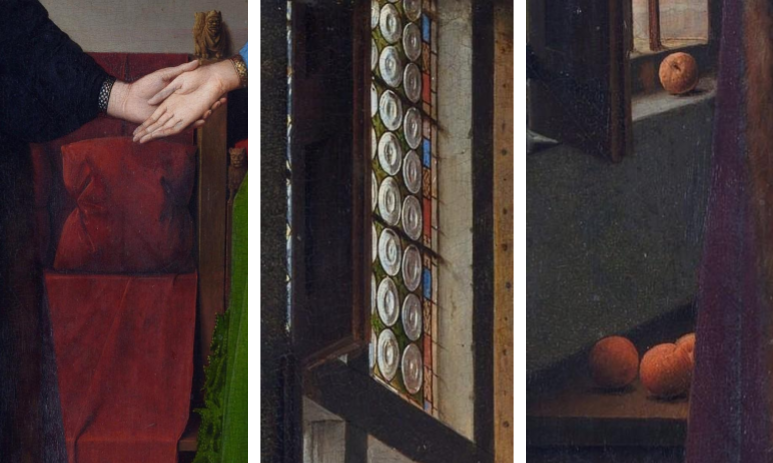
Fancy Wardrobe
The couple’s clothing supports the idea of subtly displayed wealth. Their outfits are expensive and stylish but not overly flashy. Neither wears extravagant jewelry; the woman has two rings and a simple gold necklace, while the man wears one ring on his right hand. Like the rest of the painting, the luxury is in the details, showing their wealth without appearing overly proud or vain.
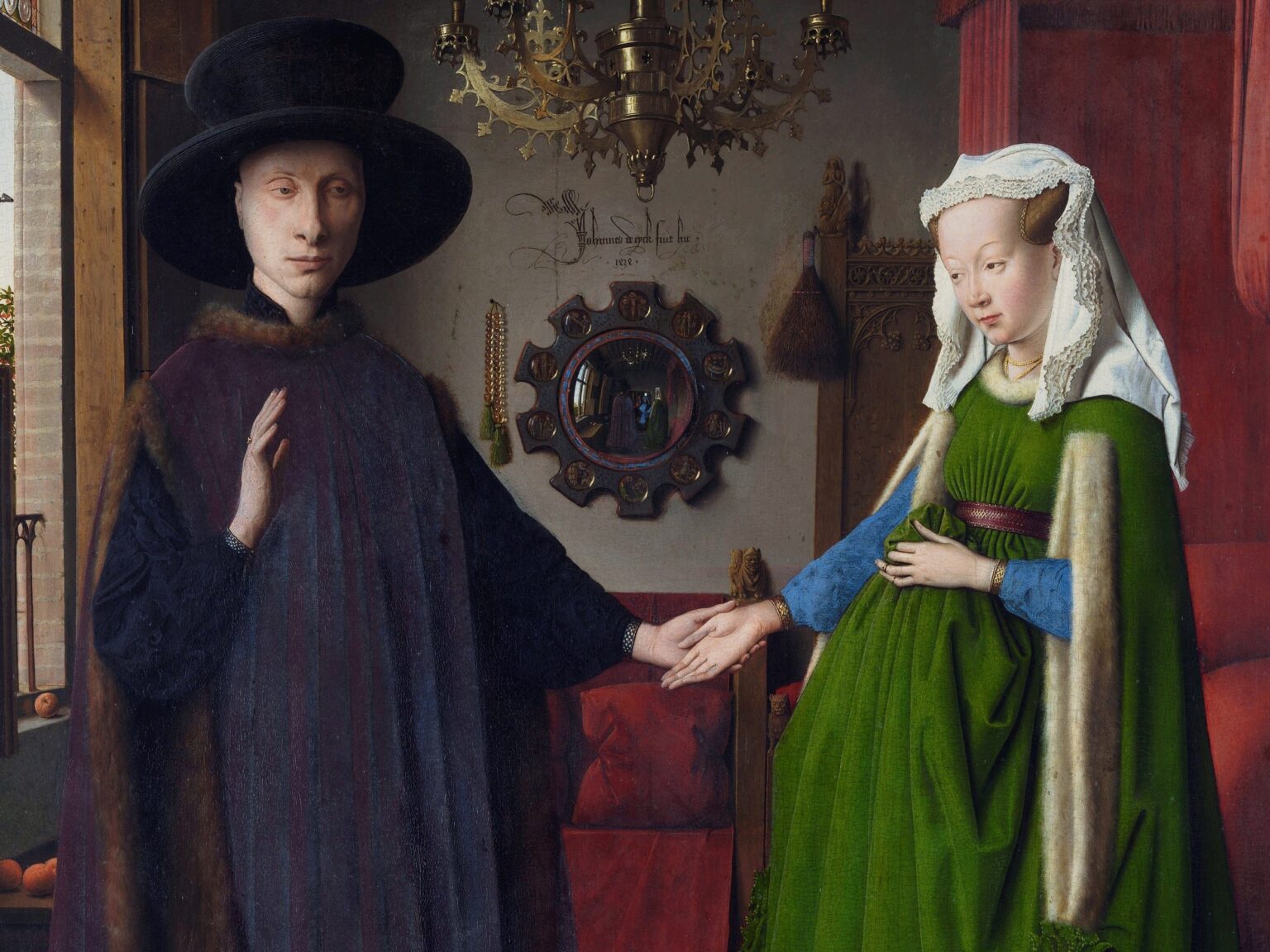
The woman’s hair is stylishly arranged in modest horns and covered with a white veil. Her gown is green, which was one of the most expensive colors at the time. Its impressive size required a lot of fabric, including costly wool and white fur. Underneath, she shows just a hint of blue, another expensive color often associated with royalty, suggesting she can afford it without overdoing it.
Contrary to what one might first think, she is not pregnant. The way she holds the fabric of her gown in front of her creates a shape that resembles pregnancy, but this was a common way for women to pose. This pose, seen as a sign of female decorum, was typical in Northern Renaissance art and can be found in other paintings from that time.
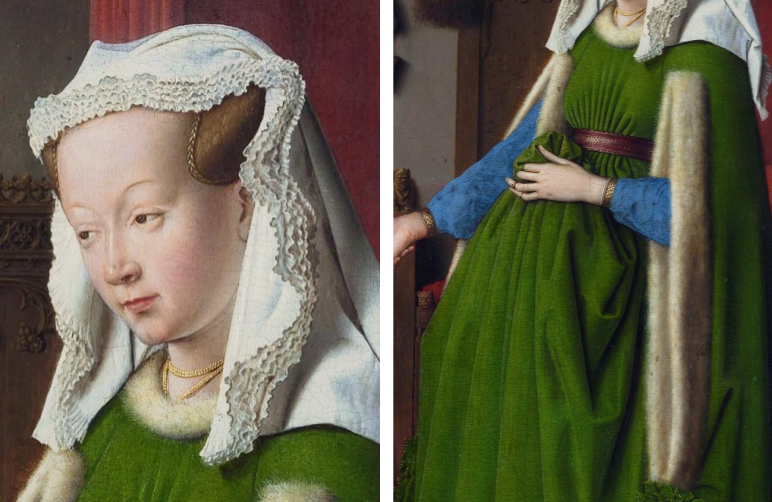
The man’s clothing is dark with touches of blue, made from heavy fabric with fur trim. It’s interesting to note how the artist depicts the different materials in his outfit. The structure of his hat, made of woven straw, is very different from the brown fur, and the plain fabric and silver cuffs each have their own distinct textures.

Religious Implications
The chandelier on the ceiling stands out for a couple of reasons: Van Eyck’s detailed depiction of it is impressive, and the way light reflects off the brass is also striking. At that time, religion and expressions of faith were significant, and this is reflected in the chandelier. It has only one lit candle, which symbolizes devotion to a single God (the Christian God).
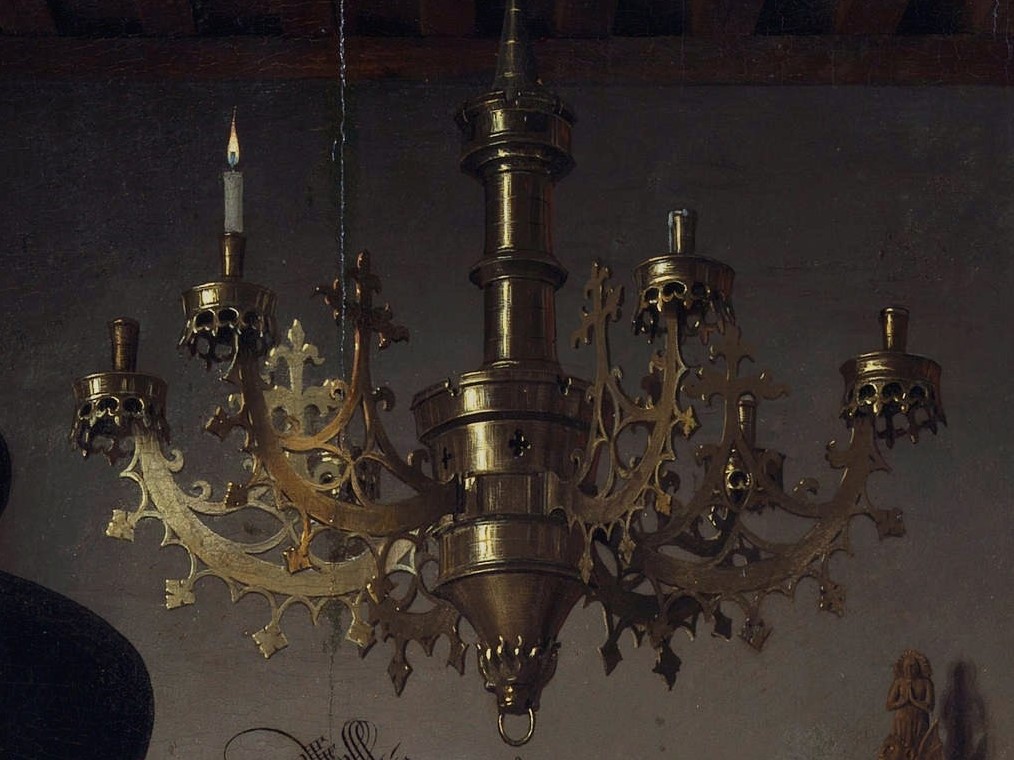
Another religious element in the painting is the mirror, which is decorated with scenes from the Passion of Christ. Each scene around the mirror is only about 1.5 cm in size, yet they are all recognizable. On the left, there are also some rosary beads. Again, Van Eyck’s skill shines through; the green bristles are painted with great precision, and you can see the light reflecting on the beads as well as the thread passing through them.
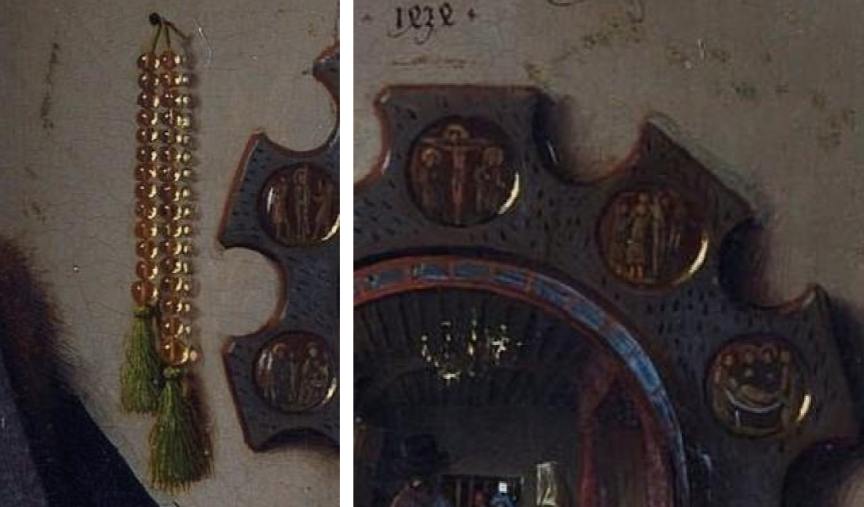
The Artist’s Presence
The convex mirror in the painting sparks endless speculation. This large mirror, larger than what would have been possible at the time, reflects not only the entire room and the backs of the couple but also shows two men entering through a door—one in red and the other in blue. Above the mirror, the artist’s signature reads: “Johannes de Eyck fuit hic. 1434” (meaning “Jan van Eyck was here. 1434”). Could Jan van Eyck be one of the men at the door? Is his signature indicating his presence in the scene he created?

Beneath the Arnolfini Portrait
Recent technical analyses have revealed more about how the painting was created. For instance, we learned that the under-drawing was done in stages. First, Van Eyck sketched the two figures, the main furniture, and the basic layout of the room. Later, he added details like the dog, chandelier, and chair.
He also made changes to the couple’s faces and bodies in subsequent sketches. For example, he adjusted the position of the woman’s head and likely softened the man’s features. Regarding his technique, we know he painted not just with the brush tip but also with the handle. At times, he even used his fingers; a thumbprint can be seen near the shadow of the dog’s leg.
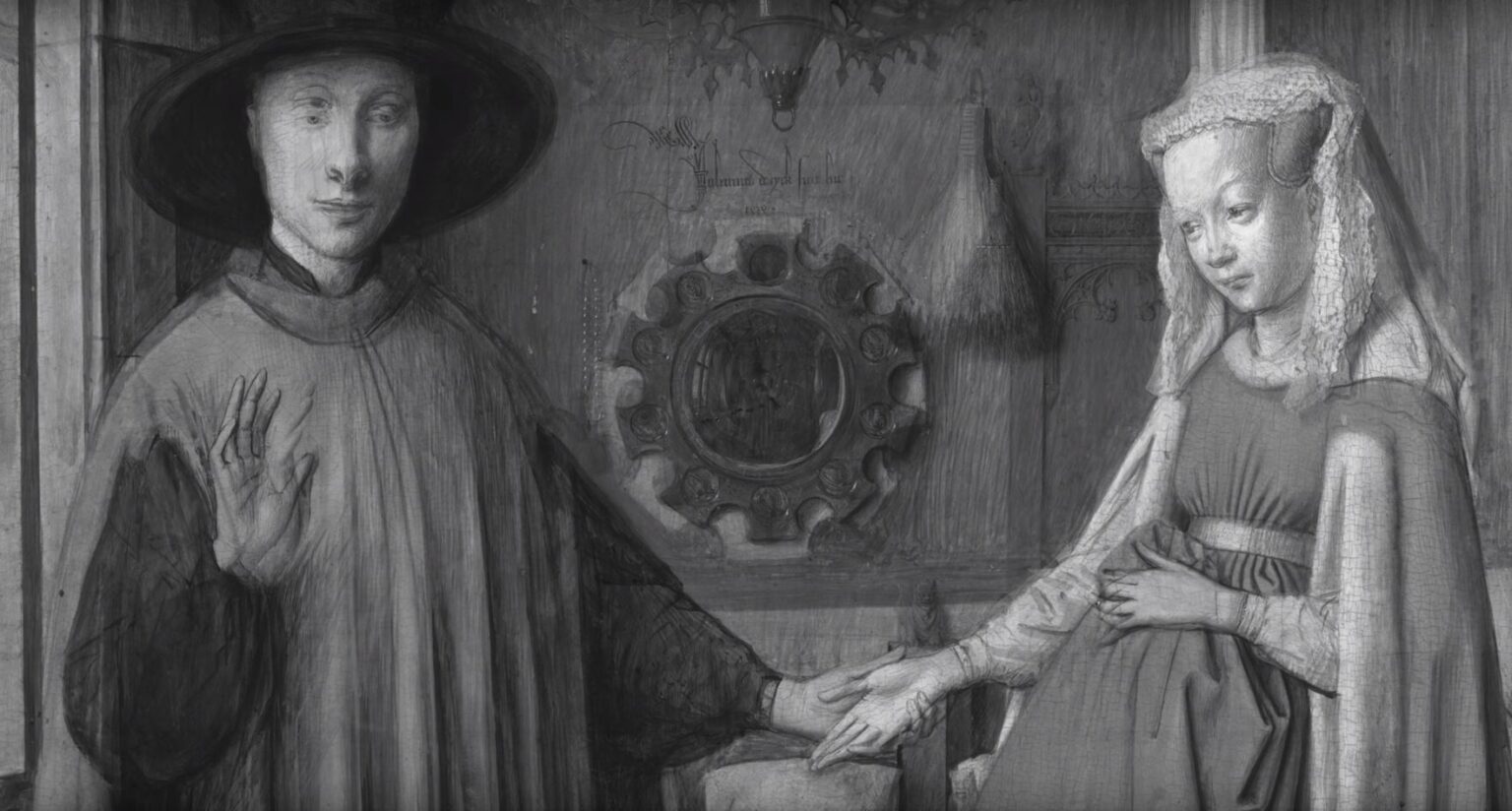
The Arnolfini Portrait offers valuable insights and intriguing details to explore. However, it also raises many questions that remain unanswered, leading to various interpretations and theories. Some questions might be answered as new evidence and studies emerge, while others may always remain a mystery. Regardless, Jan van Eyck has given us one of the most fascinating paintings in art history.
P.S. You can view a high-quality macro-photograph of the Arnolfini Portrait, provided by the Closer to Van Eyck Research Project, which examines the artist’s creative process!
You may also like: Leonardo da Vinci and the “satellite” map made in 1502

